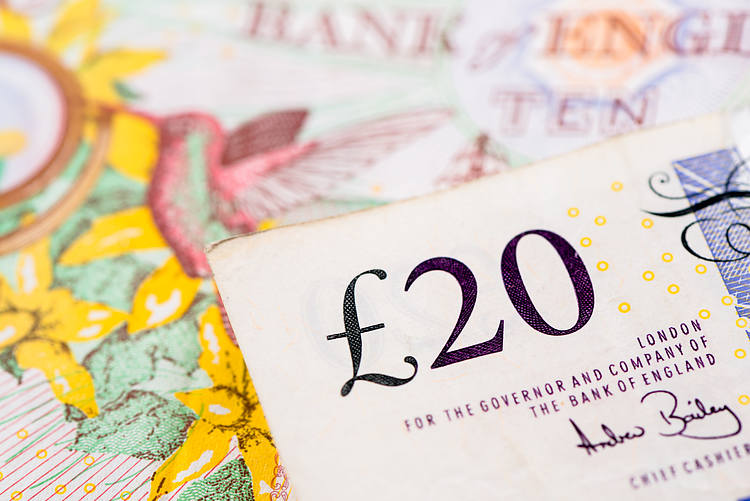- GBP/USD recovered four-tenths of a percent on Thursday.
- Markets bid up the Pound Sterling despite UK PMI figures missing the mark.
- US PMI data came in above expectations, limiting Greenback losses.
GBP/USD recovered some much-needed ground on Thursday, climbing 0.4% as Cable bidders grapple with keeping price action north of the 1.2900 handle. UK Purchasing Managers Index (PMI) figures broadly missed the mark early Thursday, but both the Services and Manufacturing PMI components held north of contraction territory below 50.0.
US PMI figures broadly beat expectations, containing US Dollar losses and keeping GBP/USD tied up just below 1.3000. US Manufacturing PMI activity figures rose to 47.8 in October, beating the expected 47.5 and climbing even further from August’s 47.3. Meanwhile, the Services PMI component bounced to 55.3, climbing from the previous month’s 55.2 and beating the expected decline to 55.0.
Meaningful UK economic data takes a break on Friday, leaving markets to contend with US Durable Goods Orders and an update to 5-year Consumer Inflation Expectations from the University of Michigan (UoM). Headline US Durable Goods Orders in September are expected to contract a full 1.0% MoM, extending the recent downturn after August’s flat-footed 0.0% print. October’s UoM 5-year Consumer Expectations are expected to come in close to their previous print of 3.0%.
GBP/USD price forecast
The GBP/USD pair is currently in a corrective phase after a significant bullish rally that peaked near the 1.3300 level in early October. Following the recent decline, the price has found support near the 200-day EMA (black line) at 1.2848, which could act as a key level for the pair in the coming sessions. The 50-day EMA (blue line) at 1.3057 is now positioned as an overhead resistance, and with the pair trading below this level, the short-term trend remains bearish. However, the price has managed to bounce slightly from the 1.2900 psychological level, signaling that buyers are stepping in to defend the 200-day EMA.
The MACD indicator is currently in bearish territory, with the MACD line (blue) sitting below the signal line (orange), and the histogram displaying negative momentum. This suggests that the bearish pressure is still prevalent. However, the recent narrowing of the MACD histogram indicates that selling momentum may be fading, and a potential bullish crossover could materialize if the pair holds above the 1.2848 support level. A daily close below this support would likely accelerate the downward move toward the 1.2700 area, while a rebound above the 1.3050 resistance could reinvigorate the bulls, aiming for the 1.3200 zone.
GBP/USD daily chart
Pound Sterling FAQs
The Pound Sterling (GBP) is the oldest currency in the world (886 AD) and the official currency of the United Kingdom. It is the fourth most traded unit for foreign exchange (FX) in the world, accounting for 12% of all transactions, averaging $630 billion a day, according to 2022 data. Its key trading pairs are GBP/USD, also known as ‘Cable’, which accounts for 11% of FX, GBP/JPY, or the ‘Dragon’ as it is known by traders (3%), and EUR/GBP (2%). The Pound Sterling is issued by the Bank of England (BoE).
The single most important factor influencing the value of the Pound Sterling is monetary policy decided by the Bank of England. The BoE bases its decisions on whether it has achieved its primary goal of “price stability” – a steady inflation rate of around 2%. Its primary tool for achieving this is the adjustment of interest rates. When inflation is too high, the BoE will try to rein it in by raising interest rates, making it more expensive for people and businesses to access credit. This is generally positive for GBP, as higher interest rates make the UK a more attractive place for global investors to park their money. When inflation falls too low it is a sign economic growth is slowing. In this scenario, the BoE will consider lowering interest rates to cheapen credit so businesses will borrow more to invest in growth-generating projects.
Data releases gauge the health of the economy and can impact the value of the Pound Sterling. Indicators such as GDP, Manufacturing and Services PMIs, and employment can all influence the direction of the GBP. A strong economy is good for Sterling. Not only does it attract more foreign investment but it may encourage the BoE to put up interest rates, which will directly strengthen GBP. Otherwise, if economic data is weak, the Pound Sterling is likely to fall.
Another significant data release for the Pound Sterling is the Trade Balance. This indicator measures the difference between what a country earns from its exports and what it spends on imports over a given period. If a country produces highly sought-after exports, its currency will benefit purely from the extra demand created from foreign buyers seeking to purchase these goods. Therefore, a positive net Trade Balance strengthens a currency and vice versa for a negative balance.
Read the full article here

